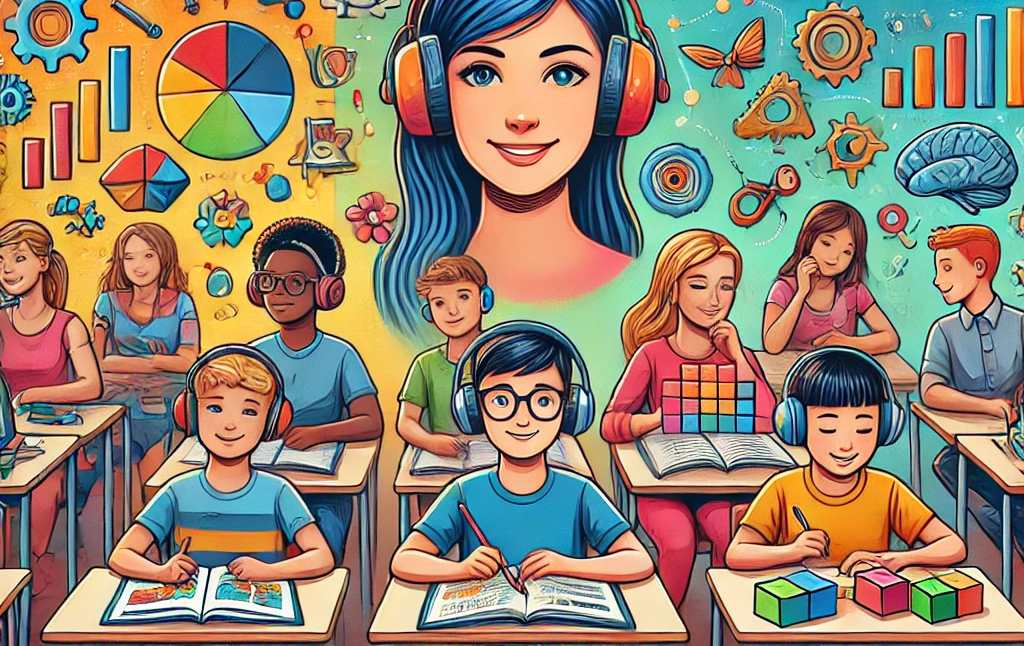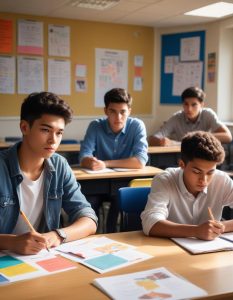Unlocking Educational Potential
Education is the cornerstone of personal and societal growth, and one of its greatest challenges is accommodating the diversity of learners. Students come with unique preferences, strengths, and needs that influence how they absorb and process information. Learning styles—the distinct ways individuals perceive, understand, and retain knowledge—play a crucial role in shaping educational experiences and outcomes. By understanding and supporting these styles, educators and parents can unlock every learner’s potential.
The Importance of Recognizing Learning Styles
Every individual learns differently, influenced by their cognitive, emotional, and environmental preferences. Learning styles can be broadly categorized into three main types: visual, auditory, and kinesthetic. Each style reflects how learners best engage with and retain information. Recognizing these differences is not about labeling students but about creating opportunities for tailored learning experiences that enhance comprehension, retention, and enjoyment.
Moreover, emotional learning preferences, such as structured versus flexible environments or independent versus collaborative work, also shape how learners respond to educational settings. By addressing these emotional and cognitive dimensions, educators can create inclusive classrooms that foster engagement, reduce anxiety, and promote academic success.
Cognitive Learning Styles: Understanding How Minds Work
Cognitive learning styles determine how individuals process information. The three primary styles—visual, auditory, and kinesthetic—provide insight into how students perceive and interact with educational materials.
Visual Learners
Visual learners rely on their sense of sight to understand and remember information. They excel when presented with images, diagrams, and written instructions.
Characteristics:
- Strong preference for visual aids such as charts, graphs, and videos.
- Better recall of images and written text than spoken words.
- Enjoy creating or observing detailed visuals to support learning.
Strategies to Support Visual Learners:
- Incorporate visual elements like mind maps, flashcards, and infographics into lessons.
- Encourage note-taking with sketches, color-coding, and diagrams.
- Use videos, animations, and presentations to explain complex concepts.
* The Science of Sound: Auditory Perception
* The World We Hear: Auditory Sensory Processes
* Understanding Auditory Processing: From Perception to Cognition
* Exploring the Auditory Landscape: A Comprehensive Guide to Sound
* The Power of Sound: Auditory Phenomena and Applications
Auditory Learners
Auditory learners process information through listening and verbal communication. They thrive in environments where spoken instructions and discussions are prioritized.
Characteristics:
- Easily remember information shared through lectures, podcasts, or discussions.
- Prefer verbal instructions over written guides.
- Often enjoy music, rhymes, or storytelling as part of the learning process.
Strategies to Support Auditory Learners:
- Provide access to audio recordings of lessons and discussions.
- Encourage group discussions, debates, and question-and-answer sessions.
- Introduce mnemonic devices, songs, and rhymes to aid memory.
Kinesthetic Learners
Kinesthetic learners engage with the world through physical activity and hands-on experiences. They excel in tasks that require movement and experimentation.
Characteristics:
- Learn best by doing, such as through experiments, simulations, and role-playing.
- Prefer interactive and tactile activities to passive observation.
- Often incorporate movement into their learning process, such as pacing while thinking.
Strategies to Support Kinesthetic Learners:
- Design lessons around practical activities, such as lab experiments or model building.
- Use manipulatives like blocks, puzzles, and other tools to reinforce learning.
- Incorporate opportunities for movement, such as study breaks or interactive games.
Emotional Learning Styles: The Role of Environment and Interaction
While cognitive styles influence how learners process information, emotional learning styles determine how they interact with their environment and peers. Preferences for structure, flexibility, independence, or collaboration shape how students engage with tasks and overcome challenges.
Structured vs. Flexible Learners
- Structured Learners: Thrive in organized settings with clear rules, schedules, and expectations. They benefit from detailed lesson plans and predictable routines.
- Flexible Learners: Prefer open-ended activities and opportunities to explore ideas freely. They excel in creative, less-restrictive environments.
Independent vs. Collaborative Learners
- Independent Learners: Prefer working alone in quiet spaces, allowing them to focus without distractions. They excel in self-paced tasks.
- Collaborative Learners: Gain energy and motivation from group interactions. They thrive in teamwork, peer discussions, and cooperative projects.
Creating an Emotionally Supportive Environment:
- For Structured Learners: Maintain consistency in classroom routines and provide clear guidelines.
- For Flexible Learners: Allow freedom within assignments, such as choosing topics or methods of presentation.
- For Independent Learners: Offer quiet workspaces and opportunities for self-directed learning.
- For Collaborative Learners: Encourage group projects and peer-to-peer teaching activities.
Why Tailoring Instruction Matters
Educational research shows that students achieve better outcomes when instruction aligns with their learning styles. Tailored approaches help learners build confidence, improve retention, and feel more engaged. For example, visual learners are more likely to succeed when lessons include diagrams and videos, while kinesthetic learners thrive in hands-on projects. Recognizing and accommodating these preferences ensures that no learner feels left behind.
However, it’s important to avoid over-reliance on a single learning style. Encouraging students to engage with various methods helps them develop a well-rounded approach to learning and adapt to diverse situations.
Practical Steps for Educators and Parents
- Identify Learning Styles: Use observation and simple assessments to determine students’ cognitive and emotional preferences. Look for patterns in how they approach tasks and retain information.
- Differentiate Instruction: Provide diverse materials and activities to cater to multiple learning styles. For example, pair visual aids with oral explanations or follow up a lecture with a hands-on activity.
- Create an Inclusive Environment: Design classrooms that accommodate both structured and flexible learners. Use a mix of individual tasks and collaborative projects to engage all students.
- Foster Growth Beyond Preferences: Encourage students to explore learning methods outside their dominant style. For instance, auditory learners can benefit from practicing note-taking, while kinesthetic learners can try summarizing content in written form.
- Involve Parents: Share insights about learning styles with parents to reinforce strategies at home. For example, parents can use visual aids for homework or discuss lessons to support auditory learners.
The Broader Implications of Learning Styles Awareness
Understanding learning styles is not just beneficial for individual students; it has broader implications for the education system. By embracing diversity in learning, schools can:
- Reduce achievement gaps by addressing the needs of underperforming students.
- Enhance teacher effectiveness by equipping educators with tools to adapt their methods.
- Foster a love of learning that extends beyond the classroom.
As technology advances, new tools such as adaptive learning platforms make it easier to personalize instruction. These platforms analyze students’ progress and adjust content delivery to suit their learning styles, further emphasizing the importance of understanding these preferences.
A Call to Action
Awareness of learning styles is essential for creating equitable and effective education systems. By recognizing and supporting diverse cognitive and emotional preferences, educators and parents can empower students to achieve their full potential. This approach not only enhances academic success but also fosters lifelong skills such as adaptability, problem-solving, and self-awareness.
Whether you’re a teacher, parent, or policymaker, take steps today to understand and support the unique ways learners engage with the world. Together, we can build a future where every student has the opportunity to thrive.





